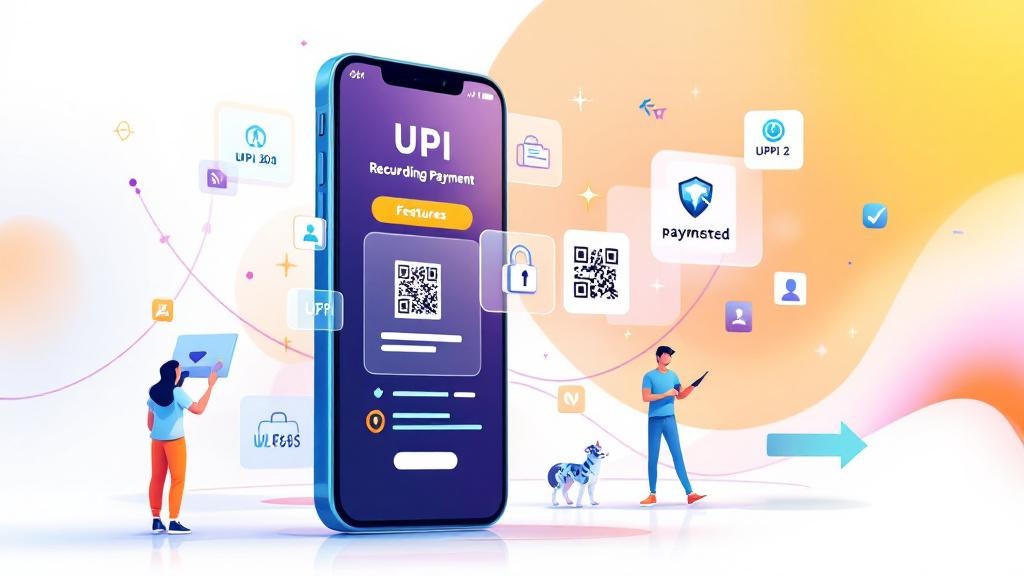In India, UPI (Unified Payments Interface) has been a game-changer in revolutionizing digital payments. Launched in 2016 by the National Payments Corporation of India (NPCI), UPI quickly became the backbone of India’s digital payment ecosystem. With UPI 3.0 now in action, the latest version brings a host of new features aimed at making payments even more secure, seamless, and user-friendly.
In this blog post, we’ll explore what’s new in UPI 3.0, its key features, and how it benefits both users and merchants. We’ll also dive into UPI 3.0’s launch date, its compatibility with apps, and how it compares to UPI 2.0.
Table of Contents:
What is UPI 3.0?
UPI 3.0 is the latest iteration of India’s most popular digital payment system, UPI. It introduces several enhancements to improve payment experiences, security, and ease of use. The primary objective behind UPI 3.0 is to streamline payment systems for everyday users while enabling more robust integrations for businesses and financial institutions.
UPI 3.0 Features Explained
The new UPI 3.0 update comes with a range of exciting features that make the process of making and receiving payments even more secure and versatile.
1. Recurring Payment Feature
One of the most talked-about UPI 3.0 features is the ability to set up recurring payments. This feature allows users to authorize regular payments like subscription fees for services such as streaming, insurance premiums, or utility bills. Once authorized, these payments happen automatically without the need for manual intervention.
This is especially useful for both consumers and service providers, as it helps ensure timely payments and reduces the chance of missing important deadlines.
2. Overdraft Account Linking
In UPI 3.0, users can link their overdraft accounts to UPI. This means you can make transactions directly from an overdraft account, adding a layer of flexibility for users who need access to extra funds beyond their current account balance.
This feature also helps in situations where there’s insufficient balance in the primary account but a credit facility is available in the overdraft account.
3. One-Time Mandate
The one-time mandate feature allows users to approve transactions for one-time payments without having to manually enter OTPs or authentication details for each transaction. After a one-time mandate is approved, the payment can be processed directly in future transactions, simplifying recurring tasks like paying bills.
4. Enhanced UPI QR Codes
UPI 3.0 brings enhanced support for dynamic and static UPI QR codes. These codes offer more security and make it easier to accept payments across different platforms. Whether you’re a consumer making a payment or a merchant receiving it, the improved QR codes make transactions faster and more secure.
UPI 3.0 vs UPI 2.0: Key Differences
When comparing UPI 3.0 to its predecessor, UPI 2.0, there are several key differences that stand out:
UPI 2.0 Features:
One-time Mandate for Transactions: UPI 2.0 introduced a one-time mandate for recurring payments.
Linking Overdraft Account: UPI 2.0 allowed linking a savings account but did not have the overdraft account linking option.
Additional Security Measures: UPI 2.0 introduced additional security layers, including improved fraud detection.
UPI 3.0 Features:
Recurring Payment Feature: UPI 3.0 allows for easier management of subscriptions and recurring payments.
Better Security with Two-Factor Authentication: UPI 3.0 includes stricter authentication protocols, including a more robust two-factor authentication system.
Expanded QR Code Capabilities: UPI 3.0 supports better-integrated QR codes for ease of use.
UPI 3.0 Launch Date:
UPI 3.0 was officially launched on November 2020 by the National Payments Corporation of India (NPCI).
How UPI 3.0 Works: A Step-by-Step Guide
Using UPI 3.0 is similar to previous versions of UPI, but with added features that simplify your payment experience. Here’s how you can get started:
Step 1: Download a UPI-Compatible App
First, you need a UPI-compatible mobile payment app. Popular options include Google Pay, PhonePe, Paytm, and others that have integrated the new UPI 3.0 features.
Step 2: Link Your Bank Account
Once you’ve downloaded the app, you’ll need to link your bank account. Most major banks in India support UPI 3.0.
Step 3: Set Up Security Features
Enable two-factor authentication (2FA) for secure transactions. This can involve setting a UPI PIN, which is used for authenticating payments.
Step 4: Make Payments or Receive Money
After your account is linked and security features are enabled, you can start sending or receiving payments. Use the app to scan QR codes, transfer money, or authorize recurring payments.
Step 5: Enjoy New Features
With UPI 3.0, you can now take advantage of features like automatic bill payments, overdraft account linking, and much more. The enhanced security protocols ensure that your transactions remain safe.
UPI 3.0 Benefits for Merchants
Merchants, especially small businesses, can benefit significantly from the enhanced features of UPI 3.0. Here’s how:
Seamless Payment Gateway Integration: UPI 3.0 allows for easy integration with payment gateways, making it simpler for merchants to accept payments directly through UPI.
Recurring Payment Option: Merchants who offer subscription-based services can benefit from the recurring payment feature, reducing the chances of missed payments.
Improved Security: With better fraud detection and two-factor authentication, UPI 3.0 ensures secure transactions, giving merchants and their customers peace of mind.
Faster Settlements: UPI 3.0 supports faster transaction settlements, helping merchants receive their payments more quickly.
UPI 3.0 App Compatibility and Supported Apps
UPI 3.0 works across a wide range of apps. Whether you use Google Pay, PhonePe, Paytm, or others, most of the leading payment apps have adopted UPI 3.0 features. Check with your app to ensure compatibility and ensure you’re taking advantage of the latest updates.
UPI 3.0 RBI Guidelines and Security Enhancements
The Reserve Bank of India (RBI) has issued guidelines to further enhance the security and trustworthiness of UPI. Some key security enhancements include:
Two-Factor Authentication (2FA): Every UPI transaction requires a secure two-factor authentication, adding an extra layer of protection.
Fraud Detection: UPI 3.0 uses advanced AI and machine learning algorithms to detect fraud patterns and protect users from fraudulent activities.
Frequently Asked Questions (FAQs)
1. What are the main UPI 3.0 features?
UPI 3.0 introduces recurring payments, overdraft account linking, improved QR codes, and better security measures.
2. What is the UPI 3.0 launch date?
UPI 3.0 was launched in November 2020 by the National Payments Corporation of India (NPCI).
3. How does UPI 3.0 work for recurring payments?
UPI 3.0 allows users to authorize recurring payments for services like subscriptions, ensuring automatic payments without manual intervention.
4. Which apps support UPI 3.0?
Most major apps, including Google Pay, PhonePe, Paytm, and others, support UPI 3.0.
5. What is the difference between UPI 2.0 and UPI 3.0?
UPI 3.0 includes new features such as recurring payments, better security, and the ability to link overdraft accounts, which were not present in UPI 2.0.
6. How can merchants benefit from UPI 3.0?
Merchants can enjoy faster payment settlements, improved security, and seamless integration with payment gateways for enhanced business operations.
7. Are there any additional security measures in UPI 3.0?
Yes, UPI 3.0 includes advanced two-factor authentication, better fraud detection, and enhanced security protocols to protect users’ transactions.








Comments (0)